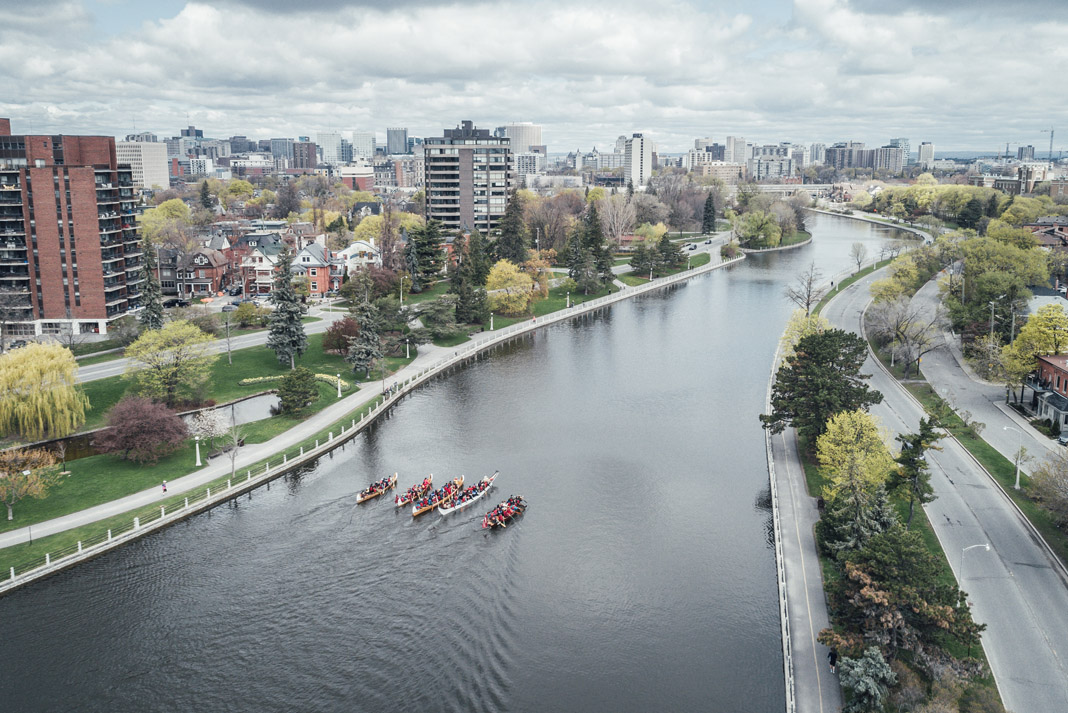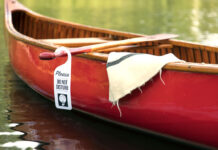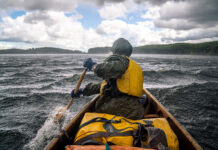The late 1960s was a tumultuous time. The Vietnam War was lurching toward an uncertain conclusion. Robert F. Kennedy and Martin Luther King Jr. were gunned down. There were racial protests at the Olympics in Mexico City and riots at the Democratic Convention in Chicago. Yet, through all this angst, a photograph came back from the Apollo spacecraft program crystallizing a new environmental sensibility throughout the western world.
Earthrise, a snapshot of Spaceship Earth coming into view over the lunar horizon, was taken on Christmas Eve in 1968 by astronaut Bill Anders. The photograph is widely considered the most influential environmental photograph ever taken.
The Creation Of The American Wild and Scenic Rivers Act
Among All The Actions taken by individuals, organizations, communities and governments in the ‘60s to curb growth and protect the beauty and fragility of the natural world was the creation of the American Wild and Scenic Rivers Act. President Lyndon B. Johnson signed it into law on October 2, 1968.
The Act reads
“It is hereby declared to be the policy of the United States that certain selected rivers of the Nation which, with their immediate environments, possess outstandingly remarkable scenic, recreational, geologic, fish and wildlife, historic, cultural or other similar values, shall be preserved in free-flowing condition, and that they and their immediate environments shall be protected for the benefit and enjoyment of present and future generations. The Congress declares that the established national policy of dams and other construction at appropriate sections of the rivers of the United States needs to be complemented by a policy that would preserve other selected rivers or sections thereof in their free-flowing condition to protect the water quality of such rivers and to fulfill other vital national conservation purposes.”
How The Wild and Scenic Rivers Act Is Doing Now
Five decades and nine presidents on, how is the Wild and Scenic Rivers Act bearing up? In the original act, eight rivers—Clearwater, Eleven Point, Feather, Rio Grande, Rogue, St. Croix, Salmon and Wolf—were designated and throughout the next 50 years the number has grown to more than 300 major rivers and tributaries.
More than 12,000 miles of rivers has been classified under this important legislation for their outstanding scenic, recreational, geological, natural, historic or cultural values.
While 12,000 miles sounds impressive, one must keep in mind for every mile of protected river there are 50 miles of American rivers altered and impounded by 75,000 dams throughout the country. Nearly 20 percent of all rivers in America are affected by dams, to say nothing of poor water quality. The Wild and Scenic Rivers Act protects roughly a quarter of one percent of America’s river resources.
Still, Potomac Riverkeeper, Dean Naujoks calls the Wild and Scenic Rivers program “amazing” for what it has done to preserve and protect from development the very best of America’s wild rivers.
Considered in concert with a wave of environmental legislation, including the Clean Air Act (1963), the Wilderness Act (1964), the Clean Water Act (1972), which began as an amendment of the 1948 Water Pollution Control Act, the Wild and Scenic Rivers Act has made a real difference,” Naujoks tells me. “If I want to take my daughter on a multi-day rafting trip any time in the future, I know the Rogue River is there, and it’s just one of many where this kind of activity is possible.
In Canada, the situation is equally hopeful and hopeless. In the same post-Apollo push to do better environmentally, governments at all levels became more informed, aware and statutorily proactive about human impact and environmental degradation. Outdoor and environmental education centers popped up all over the country. And the Canadian Wild Rivers Survey (1971-1973) led to the genesis of the Canadian Heritage Rivers System, which was finally established in 1984.
The Canadian Heritage Rivers System now includes parts of 40 rivers in all territories and provinces, except Quebec. However, in a nation of rivers from coast to coast to coast, involving hundreds of thousands of miles of waterways, the Canadian Heritage Rivers System stewards a scant 7,500 miles.
Whether or not we might consider these statistics evidence of success in literal terms, the nomination and designation process of both the Wild and Scenic Rivers program in the United States and the Heritage River System in Canada have compelled water managers and the public in all of these jurisdictions to come together to talk, to negotiate, to work collaboratively on workable management plans.
The two programs have lead to the identification and protection of what many have referred to as the world’s ultimate commons—our rivers.
And, in doing so, even with narrow corridors of protection and concern, the advocates who have participated in these processes over the last 50 years have moved rivers closer to the heart of human environmental consciousness.
In 1968, the concept of global warming was nowhere near the public agenda. Anthropogenic climate change would take another three or four decades to work its way into political consciousness. As planners, lawmakers and ordinary citizens contemplate all of the consequences and complications of a world inextricably altered by progress, it is rivers, the nourishing blue lines on Spaceship Earth, which are the point of tangible connection to the non-human world.
Fifty years on, the creation of the Wild and Scenic Rivers Act can be seen, however incidental and seemingly insignificant when weighed against the millions of tons of concrete poured by the U.S. Army Corp of Engineers, as a sovereignly worthy start.
James Raffan is an explorer, recovering academic and former executive director of the Canadian Canoe Museum. The Ottawa River received designation as a Canadian Heritage River in 2016. Twelve more American rivers are currently under review for inclusion in the Wild and Scenic Rivers Act.









